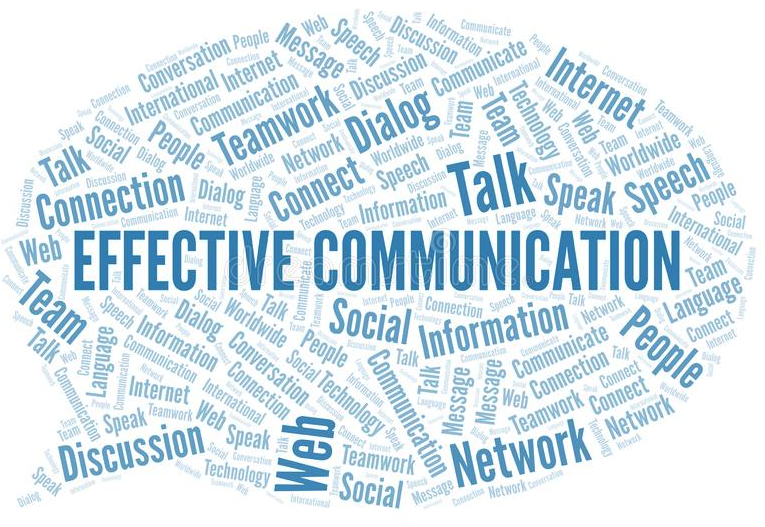Effective communication is the cornerstone of successful leadership. As a leader, your ability to engage and inspire your team through communication can make or break the productivity and morale within your organization. By honing your communication skills, you can foster a positive work environment, build strong relationships, and empower your team members to reach their full potential. In this blog post, we will explore seven practical tips to help you become a more effective communicator and inspire your team to achieve greatness.

Be Clear and Concise
One of the fundamental aspects of effective communication is clarity. As a leader, you must ensure that your messages are clear and easily understood by your team. Avoid using jargon or technical terms that might confuse your audience. Instead, use simple and concise language that conveys your ideas effectively.
Furthermore, provide clear instructions and expectations to your team members. Clearly define their roles, responsibilities, and goals. When everyone is on the same page, it reduces confusion and promotes a sense of purpose and direction.
Active Listening
Effective communication is a two-way process, and active listening is a crucial component. Actively listening to your team members demonstrates respect and fosters a culture of open communication. It allows you to understand their perspectives, concerns, and ideas.
To practice active listening, maintain eye contact, give your full attention, and avoid interrupting. Encourage your team members to express themselves freely and ask questions to clarify any doubts. By demonstrating that their voices are valued, you create an environment where everyone feels heard and appreciated.
Choose the Right Communication Channels
Different messages require different communication channels. As a leader, it’s essential to choose the most appropriate channel for each situation. While face-to-face communication is often preferred for complex discussions or sensitive matters, there are other effective channels available, such as emails, instant messaging, or video conferences.
Consider the urgency, importance, and nature of the message before deciding on the communication channel. Providing clear and concise information through the right medium enhances the effectiveness of your communication and ensures that your team receives and understands the message in a timely manner.
Embrace Non-Verbal Communication
Non-verbal cues play a significant role in effective communication. As a leader, be mindful of your body language, facial expressions, and tone of voice. These non-verbal signals can convey trust, empathy, and confidence. Maintain an open posture, make eye contact, and use appropriate gestures to engage your team members.
Additionally, be aware of your team’s non-verbal cues. Pay attention to their body language and expressions during meetings or conversations. By understanding their non-verbal cues, you can gauge their engagement, concerns, or areas of interest, allowing you to adjust your communication approach accordingly.
Provide Constructive Feedback
Constructive feedback is essential for personal and professional growth. As a leader, it’s your responsibility to provide feedback that is specific, timely, and actionable. Focus on the behavior or outcome rather than attacking the person. Frame your feedback in a positive and constructive manner, highlighting areas for improvement and offering suggestions for development.
Moreover, feedback should be a two-way street. Encourage your team members to provide feedback and actively listen to their suggestions. By fostering a feedback culture, you create an environment of continuous improvement and growth.
Adapt Your Communication Style
Not everyone communicates or receives information in the same way. As a leader, it’s crucial to adapt your communication style to cater to the diverse needs of your team members. Some individuals prefer written instructions, while others may respond better to visual aids or face-to-face conversations.
Take the time to understand your team members’ preferred communication styles and adjust your approach accordingly. This flexibility allows you to connect with your team on a deeper level and ensures that your messages resonate with them.
Celebrate Achievements and Foster Collaboration
Effective communication goes beyond conveying information; it also involves fostering a positive and supportive environment. Celebrate your team’s achievements, both big and small, to acknowledge their efforts and boost morale. Publicly recognize individuals for their contributions to motivate and inspire others.
Encourage collaboration among team members by facilitating open discussions, brainstorming sessions, and team-building activities. Effective communication within a collaborative environment enhances creativity, problem-solving, and overall team cohesion.
Conclusion
Becoming an effective communicator is a journey that requires continuous improvement and self-awareness. By implementing these seven tips, you can engage and inspire your team, leading to enhanced productivity, stronger relationships, and a positive work environment. Remember to be clear and concise, practice active listening, choose the right communication channels, embrace non-verbal cues, provide constructive feedback, adapt your communication style, and celebrate achievements while fostering collaboration. By prioritizing effective communication, you can lead your team toward success and create a culture of excellence within your organization.
Please find here my Amazon link for Effective Communication resources.


